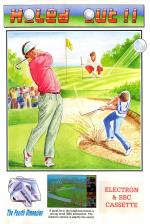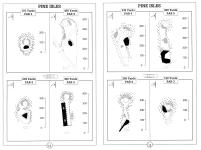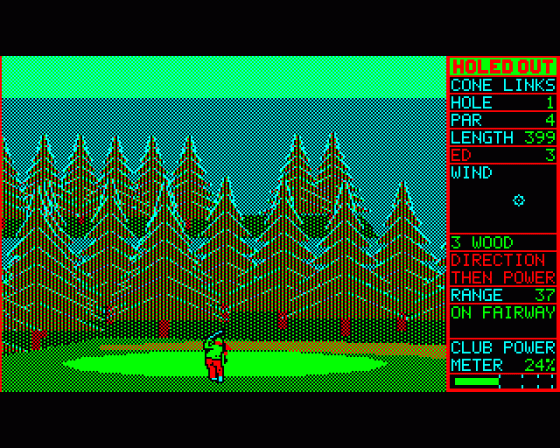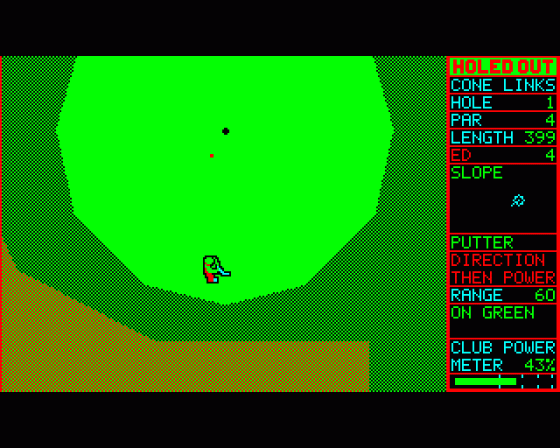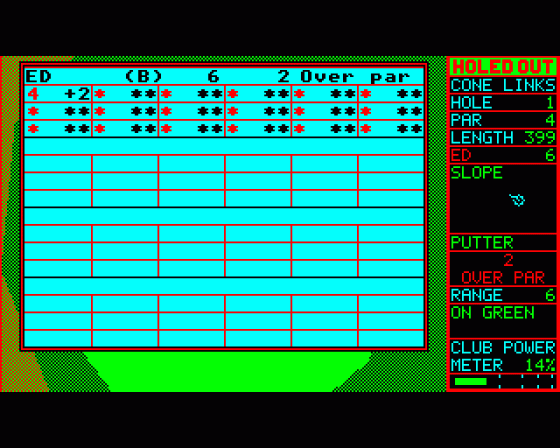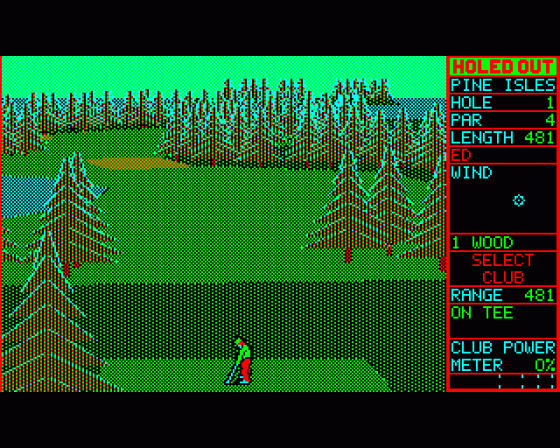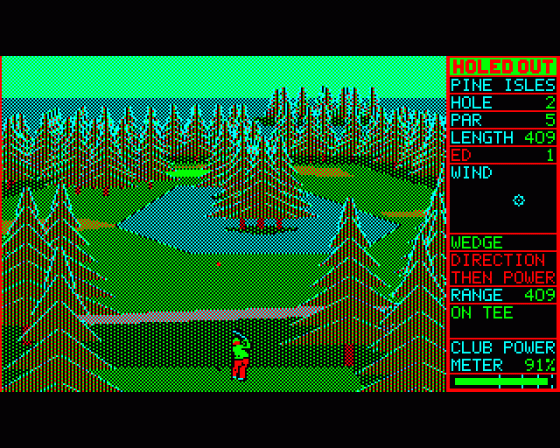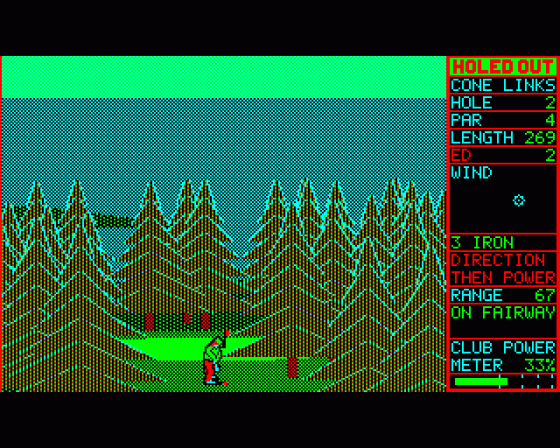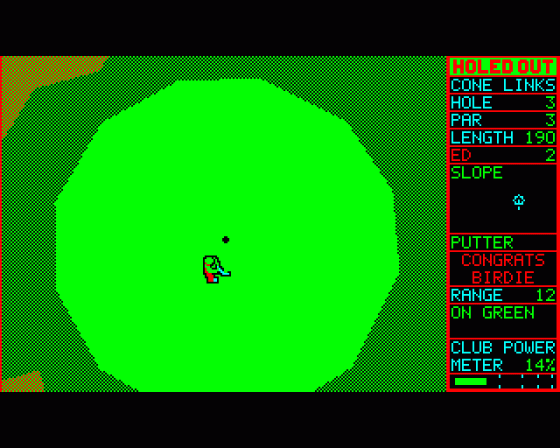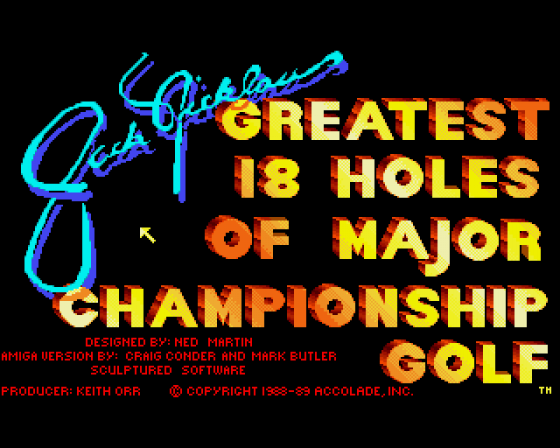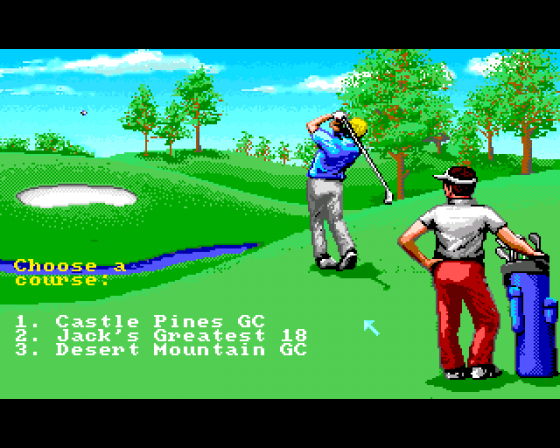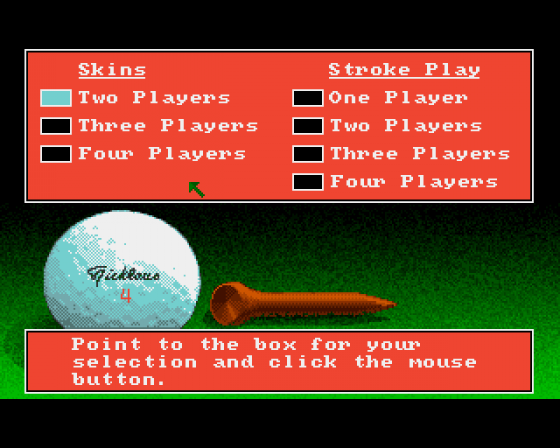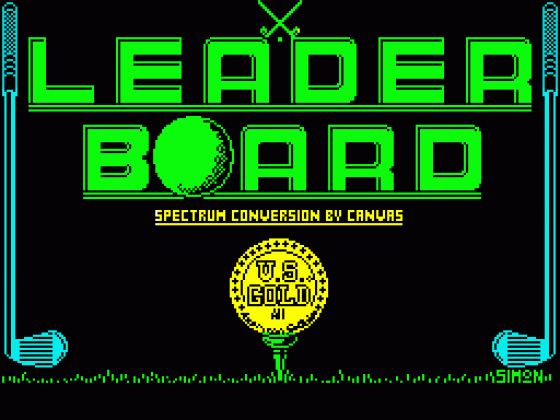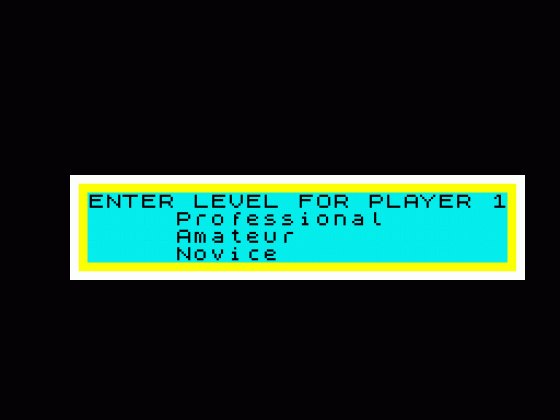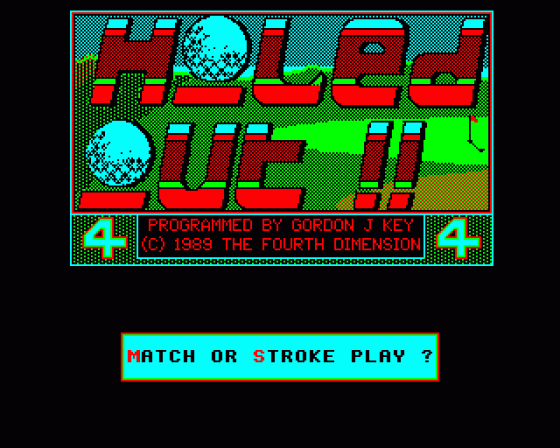
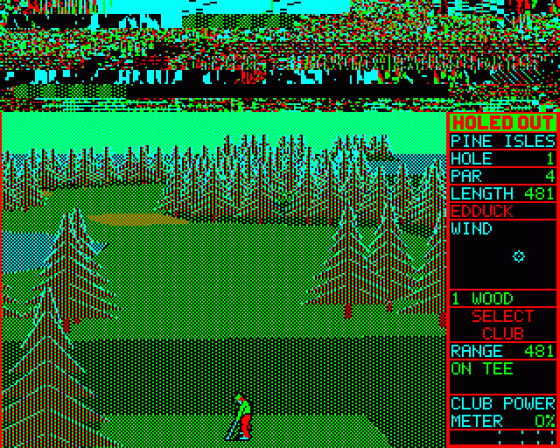
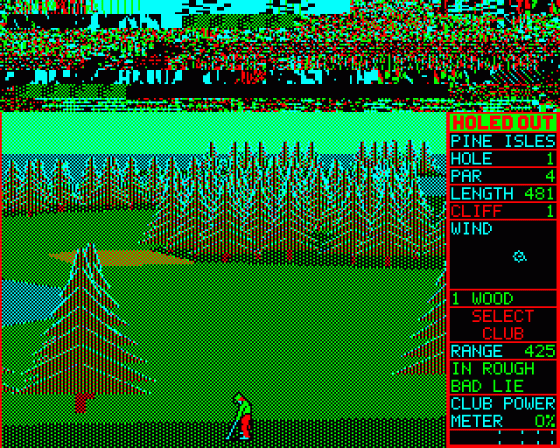
| Genre: | 3D Golf Game |
| Publisher: | The 4th Dimension |
| Cover Art Language: | English |
| Machine Compatibility: | BBC Model B, BBC Model B+, BBC Master 128, Acorn Electron |
| Release: | Professionally released on Cassette |
| Available For: | Acorn Electron, Archimedes A3000, BBC B/B+/Master 128 & BBC Master Compact |
| Compatible Emulators: | BeebEm (PC (Windows)) PcBBC (PC (MS-DOS)) Model B Emulator (PC (Windows)) Elkulator 1.0 (PC (Windows)) |
| Original Release Date: | 1st June 1989 |
| Original Release Price: | £12.95 |
| Market Valuation: | £10.30 (How Is This Calculated?) |
| Item Weight: | 64g |
| Box Type: | Cassette Single Plastic Clear |
| Author(s): | Gordon J. Key |
Variant Items
There are 0 other items featuring this same game (that we know about!). Click any of them for their details.
Active Auctions
Closed Auctions
Buy It
Unfortunately no-one is currently selling this item.
Auction Price Watch
Worried you're being ripped off? Closing prices on eBay can help you decide what a reasonable price is for a particular item.
Contains Multiple Versions
This item contains versions of Holed Out for Acorn Electron and BBC B/B+/Master 128.

Everygamegoing
18th July 2022
Looks good, particularly in paused screenshots, but as soon as you start to play it, you'll wish you hadn't bothered. Read Review

A&B Computing
1st June 1989
A really great game where attention to detail and technical ability have won out over superficially 'flash' appeal. Read Review

Acorn User
1st June 1989
A good game, with more than passing reference to the ancient game as long as one can keep one's balls dry. Read Review

Electron User
1st June 1989
The 3D perspective graphics are stunning and the gameplay is interesting and varied. Read Review

The Micro User
1st June 1989
Buy it - it will keep you entertained for hours and hours. Read Review
Full Instructions
Introduction
Whether you're young or old, male or female, beginner or professional, Holed Out has been designed especially for you. You can play alone or use the varying skill levels to allow up to four players of differing abilities to be more equally matched against each other. The game controls have been carefully selected for simplicity so that even the youngest or inexperienced computer user can play Holed Out.
Included with the game is a well thought-out instruction manual giving all the information you will require and individual maps of all the 36 holes.
- Two Contrasting 18 Hole Courses - Once you've mastered the easier first course, you should be ready for the greater challenge ahead.
- Four Skill Levels For Beginner To Professional - Learn to play without worrying about the wind, bunkers or rough.
- One To Four Players - Play alone or with friends. Each player can choose a skill level to suit their ability and thus make the match even more even.
- High Resolution Three Dimensional Graphics - A full three-dimensional view is given for each shot. Watch your player hit the ball into the distance. The shadow of the ball along the ground accurately shows you its progress.
- Excellent Sound Effects - Several effects have been added to give extra atmosphere to the game. Hear the ball rattle in as you Hole Out. (An Eagle 'seems' to sound a lot better than a Bogie.)
- Full Instruction Manual - This features easy to follow guidelines, general rules of golf and detailed scale maps of all 36 holes.
- Reference Chart - Gives summarised details of the maximum possible distances obtainable from each club. Also included are tips on how to deal with course hazards.
- Realistic Ball Flight Paths - A great deal of attention has been paid to making the ball behave how it should in the real world.
- Variable Wind On Each Hole - Wind varies significantly and can be blowing from any direction. Every round you play will be unique.
- Slice And Hook Capabilities - You can use slice or hook to swerve your ball around the various hazards that you will be encounter.
- Full Set Of Clubs - You carry 14 clubs. Woods 1, 3 and 5; Irons 1 to 9; Wedge and Putter.
- Accurately Defined Club Performances - Each club's performance has been accurately simulated. You must consider your lie, the distance required, the wind conditions, the height required and the degree to which the ball will bounce and run along the ground.
- Bunkers, Trees, Water And Variable Rough - These are best avoided as the consequences of an encounter have been 'lovingly' recreated.
- Authentic Greens - Hazards, such as 'protecting' bunkers, will require you to plan your approach to each green carefully. once made, the greens can be sloped in any direction and the gradients vary greatly. Putting is an art that will need mastering in its own right.
- Constantly Updated Full Scoreboard - You can check your progress with a full record of all the players' performances on each hole.
- Matchplay Or Strokeplay Options - Play to win the most holes or try to get the lowest overall number of shots.
- Designed By A Team Of Golf Enthusiasts For Maximum Realism - as if you haven't guessed.
- All Versions Programmed By The Highly Acclaimed Programmer Gordon Key.
Strokeplay
The objective of strokeplay is to complete all 18 holes of a course in as few shots as possible. In Holed Out there can be 1 - 4 players and the player who has played the least number of strokes at the end of the round will be the winner. Each hole has a par (the estimated standard score) and the scoreboard will tell you if you are above, below or equal to par.
Matchplay
Matchplay differs from strokeplay in that the objective of a round is to win the most holes. Matchplay in Holed Out is a game for 2 players and the player who has the least number of strokes on a particular hole is deemed to be the winner of that hole. Where both players hole out in the same number of strokes on a hole it is "halved" and the score remains unchanged.
Skill Levels
There are 4 skill levels in Holed Out. Each player can use a different skill level and the effects of each are as follows:
| 1. | Beginner (B) | |
| - | There will be no wind | |
| - | Shots played out of the rough or bunkers will be unaffected (i.e. as if they were played on the fairway) | |
| 2. | Enthusiast (E) | |
| - | There will be no wind | |
| - | Balls landing in the rough or in bunkers will always be given a "GOOD LIE" | |
| 3. | Amateur (A) | |
| - | Balls landing in the rough or in bunkers will always be given a "GOOD LIE" | |
| 4. | Professional (P) | |
| - | All hazards will affect the professional as described in the playing guidelines. | |
Game Controls
After a hole has loaded a view of a current shot will be displayed. The information about the hole and the player who is to play is shown on the status panel on the right. The procedure for playing a shot is as follows:
- Select Club
Use the Z and X keys to change the currently selected club and then press RETURN when you have decided. (See the reference card for details of maximum distances attainable from each club). If you wish to change your selection you can do so by pressing ESCAPE. You will then be asked to select another club. - Direction
A cursor will appear on the screen. This indicates the direction in which the ball will be aimed. Move the cursor with the Z and X keys. Pressing the RETURN key will start the shot so please read the section on power below before you press it. - Power
As soon as the direction has been selected by pressing RETURN the bar indicator at the bottom of the screen will start to move from left to the right. Pressing RETURN again will select the power of the shot. The bar indicator will stop moving and the percentage of power obtained will be shown. The shot will then be played.If the bar indicator reaches maximum without RETURN being pressed it will then start to go down again. It will go right down to 19% unless RETURN is pressed before this is reached.
Hook And Slice
When the bar indicator starts moving moving you have the option of searching a hooked or a sliced shot (see playing guidelines). Pressing Z instead of RETURN will result in a hooked shot and pressing X instead of RETURN will result in a sliced shot (this will be reversed if you playing left handed).
Quitting A Round
If you wish to end a game without completing it you can do so at the end of a hole. Press CTRL and Q whilst the scoreboard is displayed.
Scoreboard
The scoreboard will appear on completion of every hole. For strokeplay the scoreboard displays each player's name, his skill level in brackets, his total number of shots and his scre related to par. Below this for each player is a breakdown of his performance on each hole. In matchplay the score related to par is replaced by the number of holes that one player is winning by.
Club Performances
There are 14 clubs available in Holed Out. Each club has differing abilities to help you hit the ball the correct distance and also obtain different heights in order to deal with course obstacles. The club performances described below and the figures given on the reference card refer to shots played on the tee or on the fairway. These performances will vary significantly when playing from the rough or bunkers - see later sections in this manual for details on the effecs of these hazards.
Woods
Woods can hit the ball the farthest. Because of the angle that the ball will be hit a relatively large proportion of the overall distance travelled will be along the ground (see the reference card for exact figures).
Example 1 - A ball hit with a 1 Wood at full power will travel approx. 260 yards altogether. About 170 yards of this will be in the air and about 90 yards will be along the ground.
Example 2 - A ball hit with a 1 Wood at 50% power will travel approx. 130 yards altogether. About 85 yards of this will be in the air and about 45 yards will be along the ground.
Woods are excellent for long shots along a clear fairway and at full power can hit a ball high enough to clear the trees.
Irons
There are 10 Irons ranging for the lowest - the 1 Iron - to the highest - the Wedge. Low Irons are more powerful than high Irons in that they can hit the ball further.
As with the Woods, low Iron shots will travel a relatively large proportion of the overall distance along the ground. With higher Irons more of the overall distance travelled will be in the air rather than along the ground.
A Wedge is the highest club and hits the ball right up in the air so that when it lands, it doesn't go very far along the ground. Virtually all the distance travelled will be in the air rather than along the ground.
Example 1 - A ball hit with a 9 Iron at full power will travel approx. 100 yards. About 85 yards will be in the air and about 15 yards will be along the ground.
Example 2 - A ball hit with a 2 Iron at 50% power will travel approx. 100 yards. About 75 yards will be in the air and about 25 yards will be along the ground.
Putter
On The Fairway
The putter is really designed for use on the green. It is quite rare to use a putter on the fairway as the results are rather unpredictable due to the fact that the ball is travelling along the ground. Undulations or bumps on the ground, tufts of grass and other imperfections in the surface of the fairway can quickly slow down the shot. Usually the best use for a putter on the fairway is to hit a ball underneath a tree's branches if you are too close to hit the ball over it. If you are lucky you can get a shot of more than 100 yards and sometimes a lot further.
On The Green
Please read the section on greens below.
Wind
Wind can be blowing from any direction and the strength of the wind can vary greatly. The effects of the wind are as you would expect. A headwind will reduce the length of your shot. A tail wind will increase it. Wind from left to right will push your ball over to the right, etc, etc.
More often than not the wind will be blowing from an angle and will affect both the length and the direction of your shot. Judging the effects of the wind is a skill that requires practice and experience. The wind indicator on the control panel shows the direction of the wind and the length of the line indicates the strength of the wind (the longer the line, the stronger the wind.

Hooking And Slicing The Ball
Hook and slice are created by causing the ball to spin when you hit it. When a right-handed player slices a ball it will curve away to the right. When he hooks the ball, it will curve away to the left. The opposite effects for a left-handed player. Hook and slice are commonly used ways of avoiding hazards as they can be used to swerve shots around them - particularly trees. Practice the use of hook and slice on open fairways before trying to use them seriously as you could end up in rather a predicament if you have not mastered them.
Bunkers
Bunkers are basically large hollows in the ground filled with sand. When a ball enters a bunker, it will slow down and probably stay in the bunker but if not there are two possible outcomes:
'PLUGGED' - This means that the ball has sunk into the sand. Plugged balls are quite difficult to hit well and you must choose your club carefully to avoid a disastrous next shot. Generally the best clubs to use are the highest Irons - 9 Iron or Wedge. Even with these clubs, you will be lucky to hit the ball more than 65 yards.
'GOOD LIE' - This means that the ball is sitting on the sand. Some clubs will still be useless but you have a fair chance of hitting the ball over 100 yards if you use the right club. A 7 Iron is about the best but clubs slightly higher or lower than this will still give a reasonable shot. Your choice depends on the amount of height and run on you require.
As you can no doubt see the best advice is to avoid bunkers.
Rough
Rough is an area of uncut grass which surrounds most fairways. Obviously uncut grass will make shots harder to play as you cannot get such a clear swing at the ball. When a ball hits rough grass, it immediately gets slowed down. It may carry on for a short while before gradually coming to rest. The position it finally stops in can vary and it may end up in a very unfavourable position. There are two possible outcomes in Holed Out:
'BAD LIE' - This means that the ball has settled amongst long grass and is hard to hit cleanly. It will be necessary to use very high Irons to obtain a reasonable amount of distance from your shot. Generally, you will not be able to hit the ball further than about 50 or 60 yards.
'GOOD LIE' - If you are lucky you will get a good lie. The lie of your ball will still be worse than on the fairway but will be more accessible than a bad lie. This will give you the chance to hit the ball with a more powerful club. A 7 or 8 Iron will probably hit it the farthest. However, if you are amongst tress, a lower Iron may stop the ball flying straight up in the air and hitting the branches.
Trees
Trees are major hazards due to their size. You can go over, under or around trees but is is important to know the capabilities of the club you are using in order to avoid a collision. If you are very close to a tree it is probably best to hit the ball under it. To keep the ball down, you can do a gentle shot with a low Iron (or even a Wood porvided you are not in the rough) but to avoid any danger you may well be best to use your putter to reach safety (but not if you are in a bad lie or in the rough).
If you are close but think there is a chance of clearing the trees then a very high Iron will give you the best chance of gaining enough height to do so. Do remember that trees' branches extend out from the back as well so you need to be able to clear it fully to avoid problems.
If you are quite a distance from the trees and on the fairway you can use a Wood or low Iron at full power. This may give you enough height to clear them and provided you have judged it correctly will save you wasting shots going around them.
When judging how to deal with trees it is necessary to remember that the overall distance that the ball travels is not all in the air. The ball is at maximum height for only a short part of its flight and if it starts to come down and hits a branch it will lose its power and fall to the ground.
Water
Water is one of the worst hazards on any golf course because if your ball goes in it, you lose it. Fortunately, balls are free in Holed Out but you are penalised should you go into the water. You lose a stroke and are returned to the position from where you hit the ball into the water. The stroke you played into the water is also counted so you lose two strokes in total.
The Golden Rule - don't go into water.
Paths
Paths can often be a help to golfers as your ball will get a firm bounce and thus go further than if it landed on grass. This effect may not always be beneficial if you are trying to play a very accurate shot. However on some holes you may find them helpful and a ball played along a path can go a very long way indeed.
Awkward Lie
From time to time you will see the message 'AWKWARD LIE'. This means that you have been unlucky and your ball has landed in an awkward spot between rough and fairway, path and fairway or a position similar to this. The effect of this will be that you will not be able to get a very clear swing at the ball and it will not go quite as far.
Greens
Once you are on the green, you are only allowed to use a putter. The distance given (i.e. the range) is now in feet. The maximum distance that can be obtained on a flat green is shown on the reference card. A ball hit at 50% of maximum on-green putting power will travel only 50% of the maximum distance etc. Unfortunately most greens are not flat and this makes putting a skill that will need to be acquired by a lot of practice.
The slope indicator on the control panel shows the direction of the slope and the length of the line indicates the steepness of the slope (the longer the line, the steeper the slope). Please note that the effects are obviously different to the wind indicator.

Order Of Play
If there is more than one player in a game, the computer will automatically determine who is to play the next shot. At the start of the game, the players play their first shots in the order in which they typed in their names. After this, the player who is the farthest from the hole always plays next. After the first hole, the players play in the order of completion of the last hole. The player who played the least number of strokes plays first, etc, etc.
Golfing Terms
During the game you may encounter some of the following words. Here is a description of what they mean:
| 'BOGIE' | - | a score of 1 over par |
| 'BIRDIE' | - | a score of 1 under par |
| 'EAGLE' | - | a score of 2 under par |
| 'ALBATROSS' | - | a score of 3 under par |
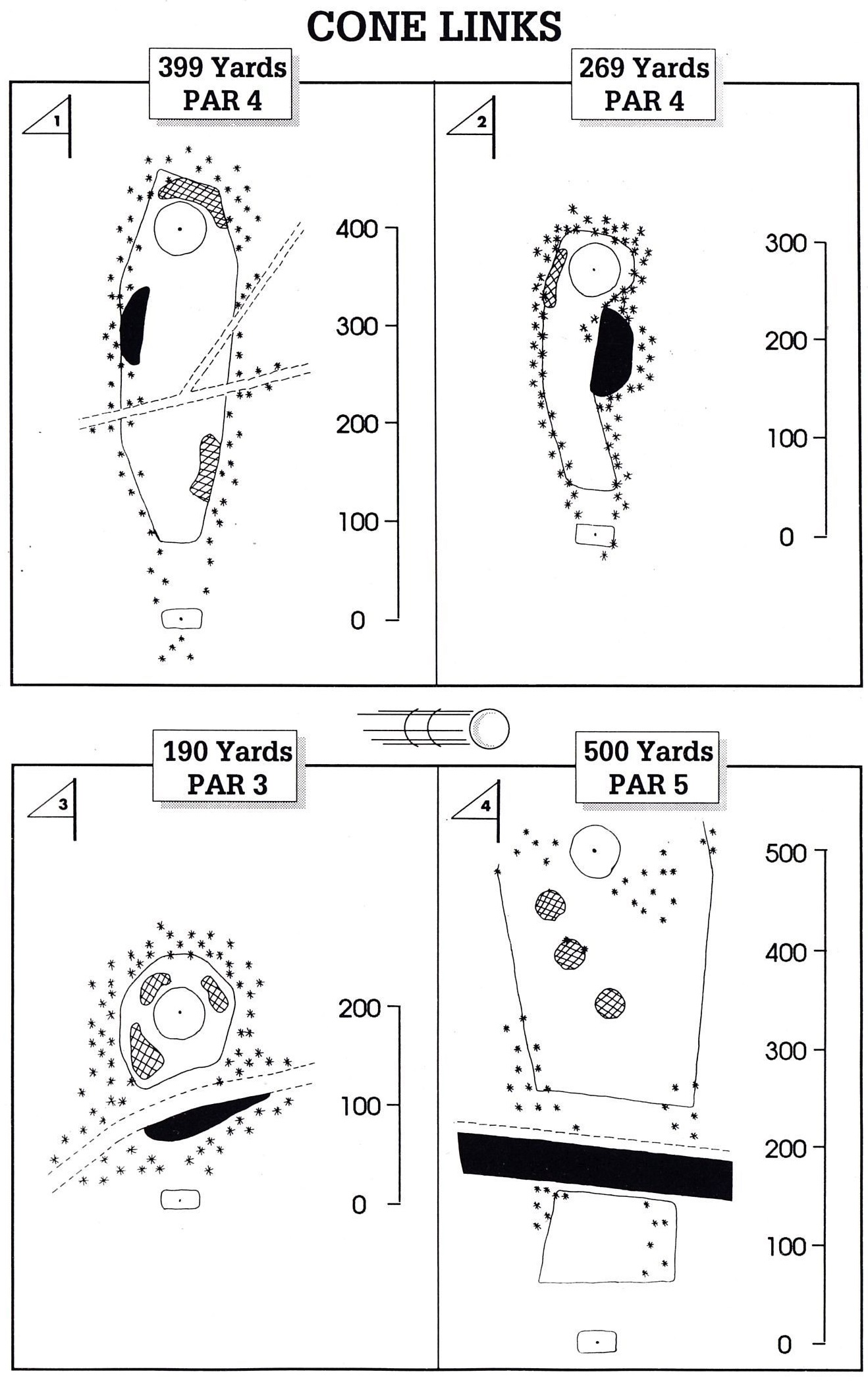 |
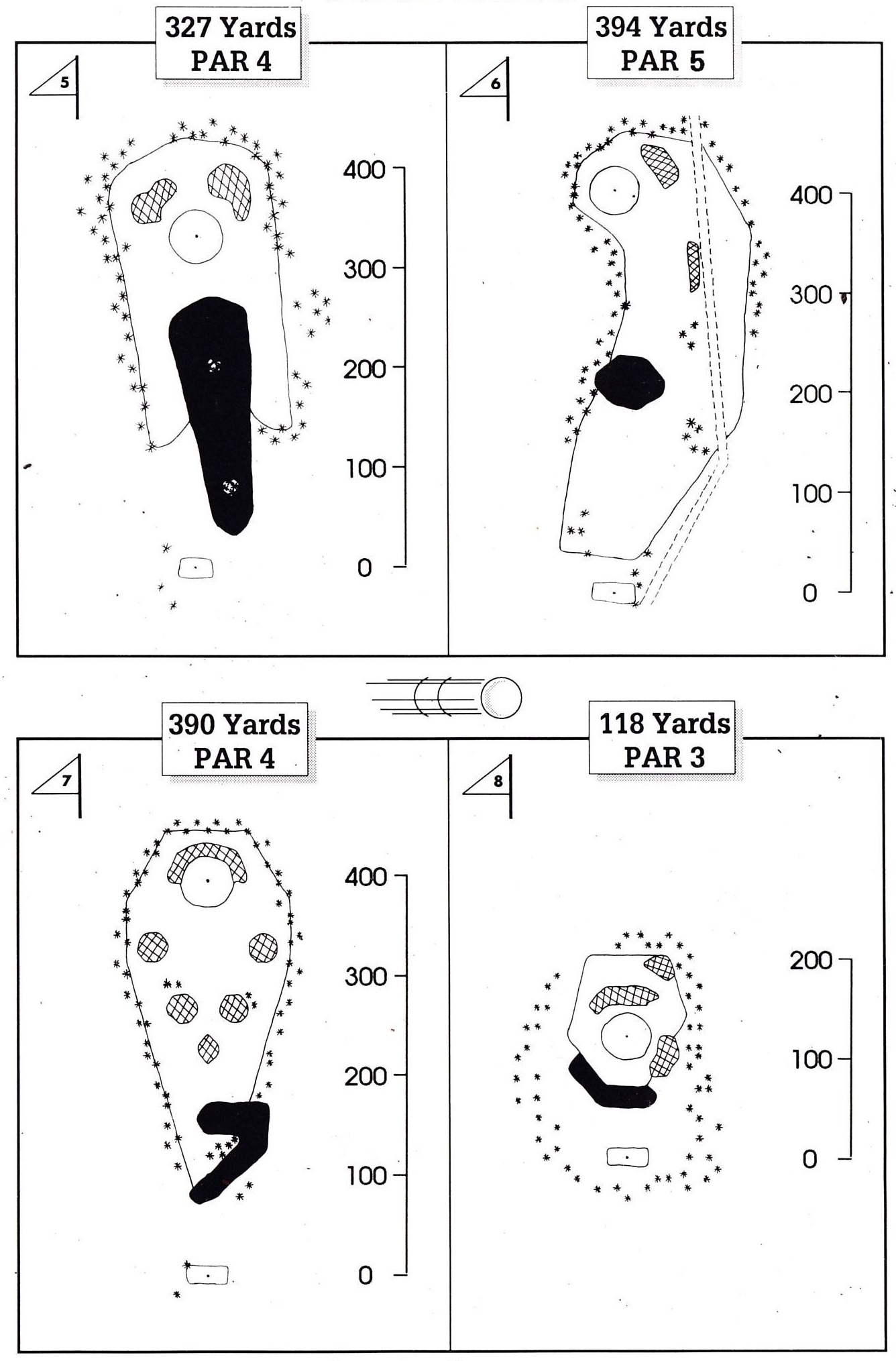 |
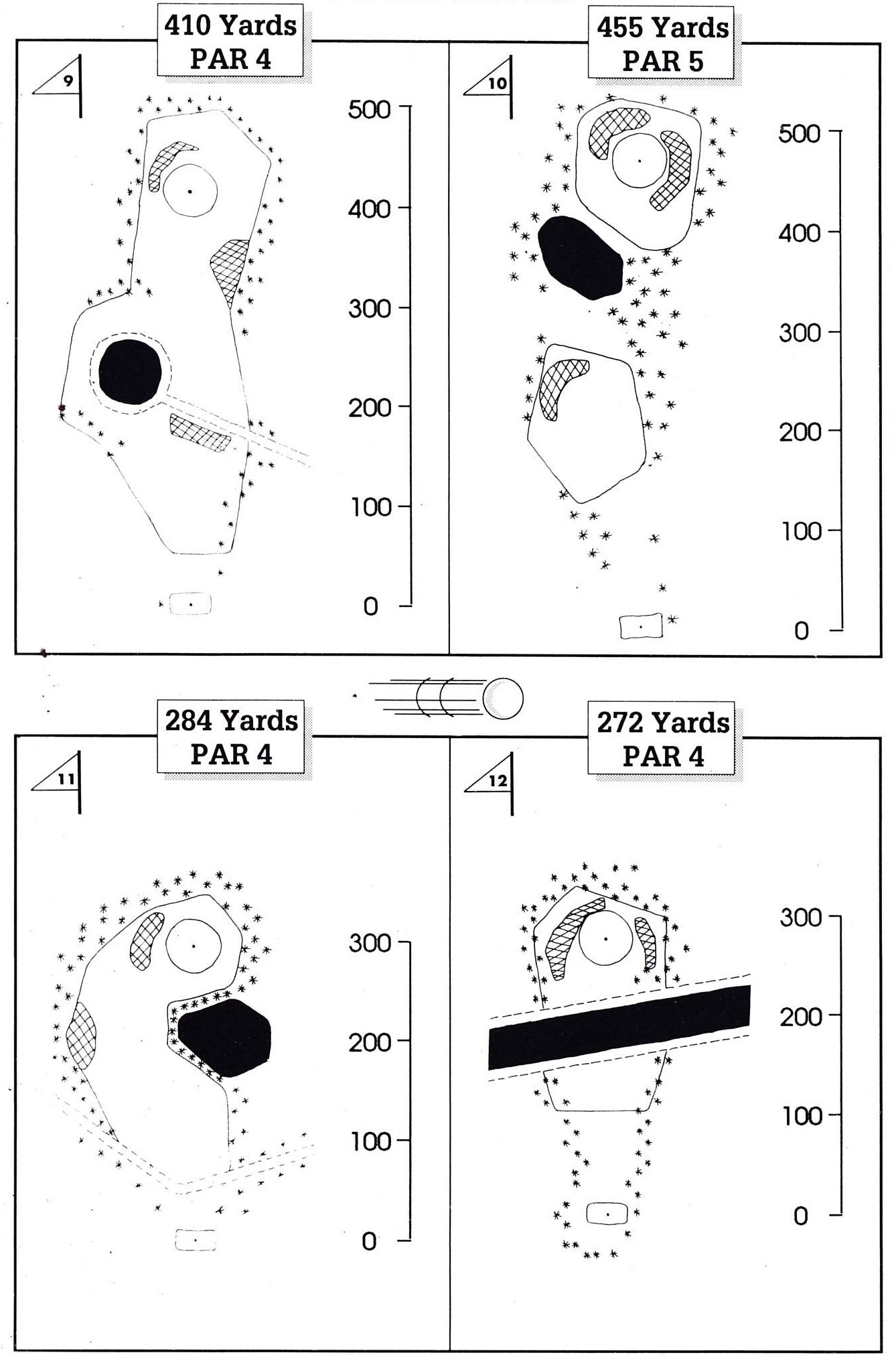 |
 |
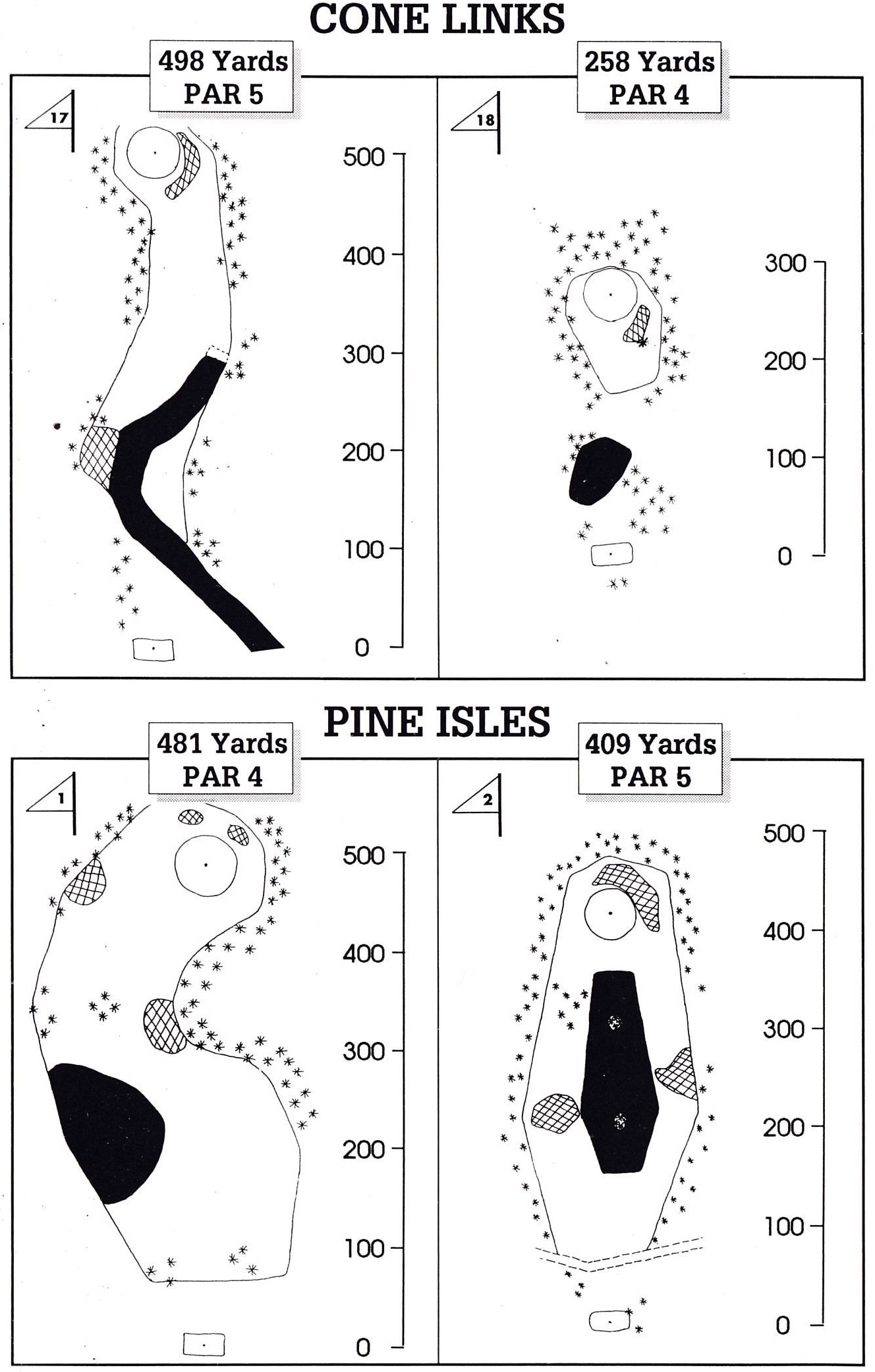 |
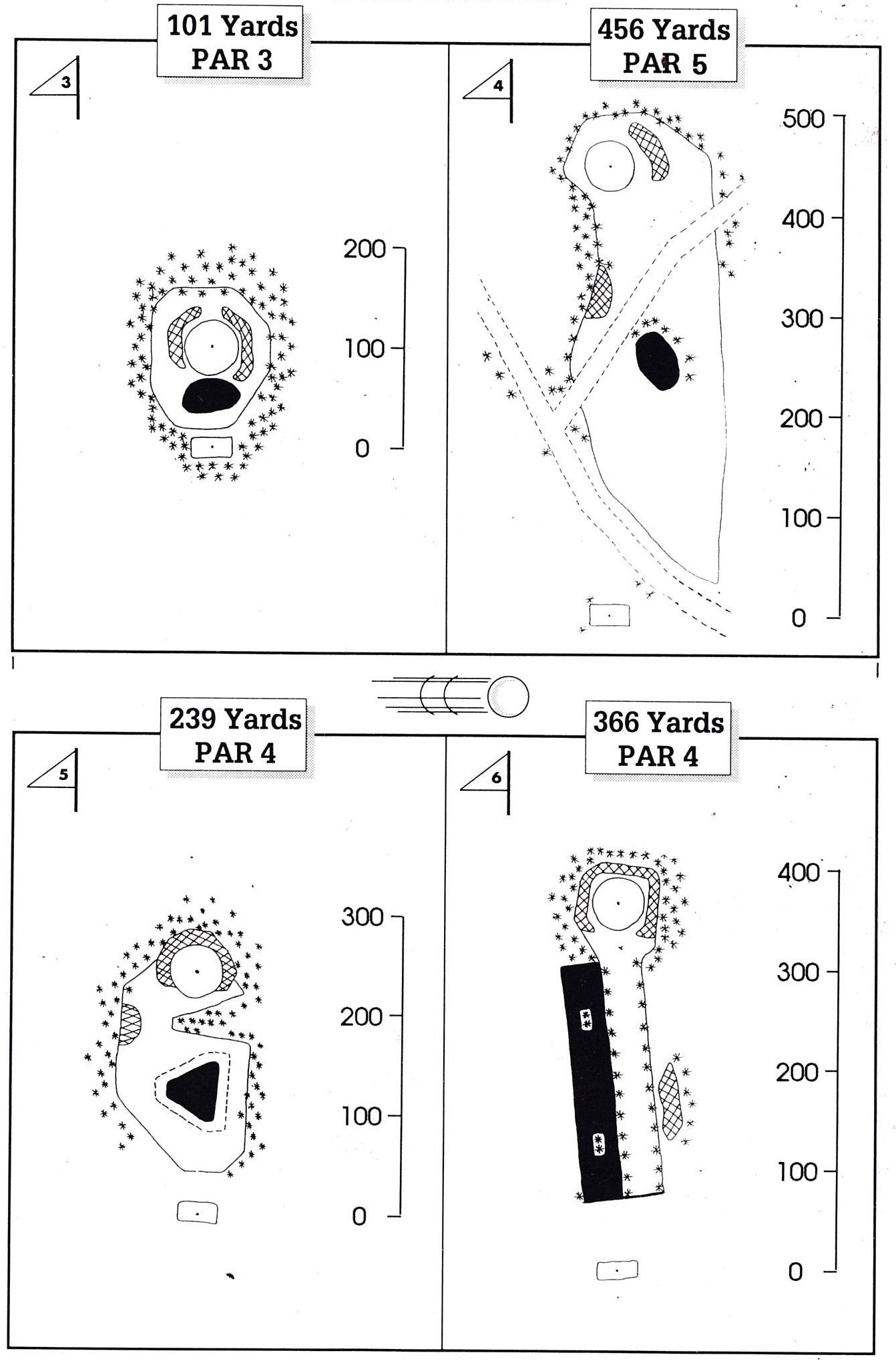 |
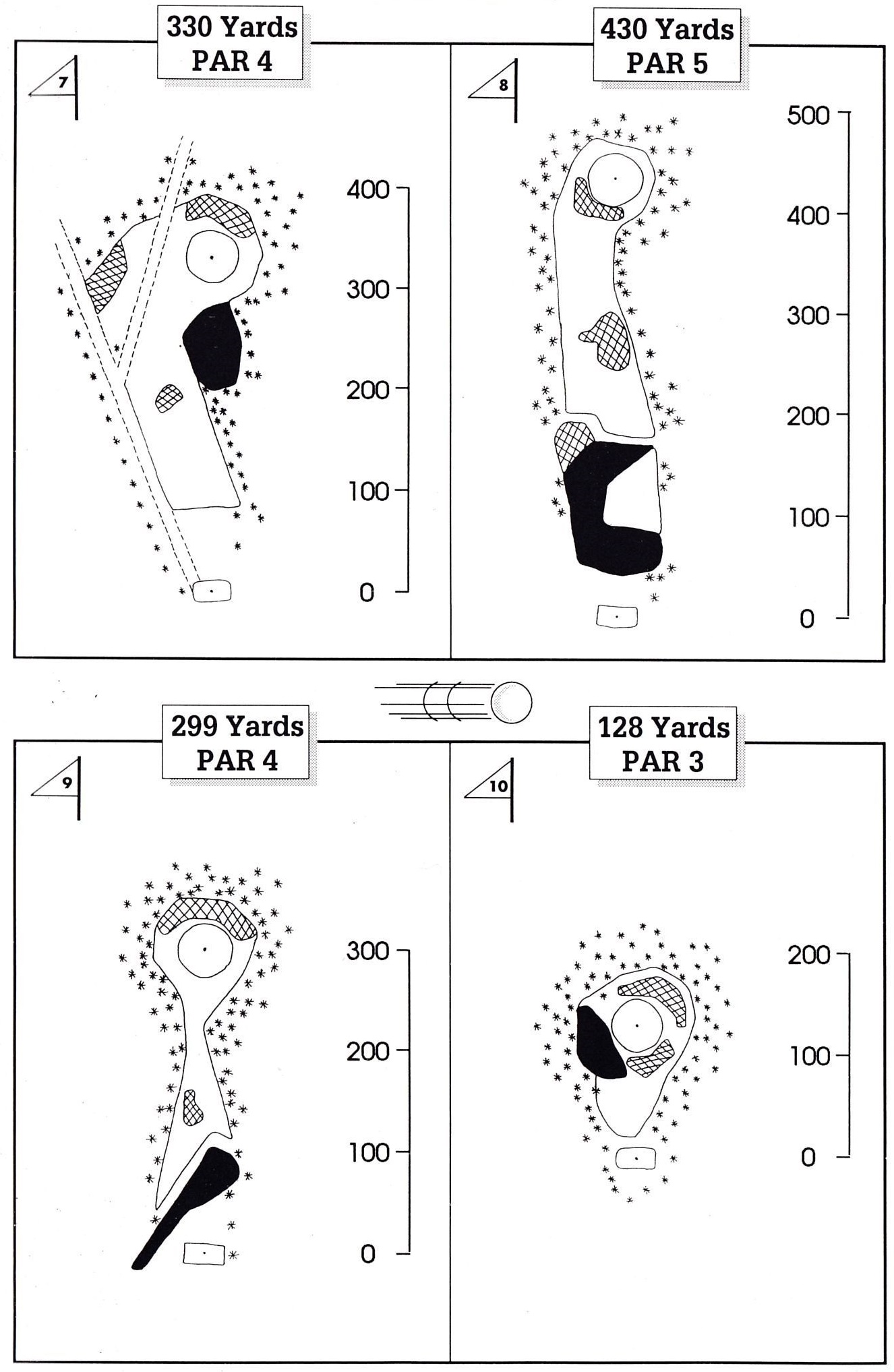 |
 |
 |
Quick Reference Guide
| Approximate Maximum Club Performances From Fairway (in yards) | |||
| Club | Max. Total Distance | In Air | Along Ground |
| 1 Wood 3 Wood 5 Wood |
260 240 225 |
170 165 160 |
90 75 65 |
| 1 Iron 2 Iron 3 Iron 4 Iron 5 Iron 6 Iron 7 Iron 8 Iron 9 Iron Wedge |
215 205 195 185 170 160 145 130 100 80 |
155 150 145 140 135 130 115 105 85 70 |
60 55 50 45 35 30 30 25 15 10 |
| Putter (on fairway) Putter (on green) |
Unpredictable 140 (feet) |
- - |
- 140 |
Tips
Bunkers
Plugged - Best clubs to use are the high Irons (9 iron or Wedge). About 65 yards can be obtained.
Good Lie - For maximum distance, try a 7 Iron (over 100 yards can sometimes be obtained).
Rough
Bad Lie - Use high Irons. Probably a Wedge will obtain the best result (about 60 yards).
Good Lie - A 7 or 8 Iron will usually hit it the farthest (90-100 yards).
If you are amongst trees, a lower Iron will give you less height to stay under the branches.
Awkward Lie
An awkward lie will generally reduce the effectiveness of your shot. Try hitting the ball harder than normal or use a more powerful club to compensate.
Putting (On Green)
If you hit the ball too hard, it will bounce off the side of the hole. The ball should drop provided that it is not hit more than 14% too hard. For example - if you are 3 feet from the hole on a flat green, you need about 3% power to reach the hole. You can hit the ball up to 17% of maximum power and it should still drop (as long as you are on target of course).
Miscellaneous
This game was mentioned in the following articles:
- Holed Out (The 4th Dimension)
- Holed Out (The 4th Dimension)
- Holed Out (The 4th Dimension)
- Holed Out (The 4th Dimension)
- Holed Out (The 4th Dimension)
- Holed Out (The 4th Dimension)
- Holed Out (The 4th Dimension)
- Holed Out (The 4th Dimension)
- Holed Out! (The 4th Dimension)
- Holed Out! (The 4th Dimension)
- Holed Out! (The 4th Dimension)
- Holed Out! (The 4th Dimension)
- Holed Out (The 4th Dimension)
- Holed Out (The 4th Dimension)
- Holed Out (The 4th Dimension)
- Holed Out (The 4th Dimension)
- Holed Out! (The 4th Dimension)
- Holed Out! (The 4th Dimension)
- Holed Out! (The 4th Dimension)
- Holed Out! (The 4th Dimension)
Screen Designers
The following utilities are also available to allow you to edit the supplied screens of this game:
Cheats
Download
A digital version of this item can be downloaded right here at Everygamegoing (All our downloads are in .zip format).
| Download | What It Contains |
|---|---|
| A digital version of Holed Out suitable for BeebEm (PC (Windows)), PcBBC (PC (MS-DOS)), Model B Emulator (PC (Windows)), Elkulator 1.0 (PC (Windows)) | |
| A digital version of Holed Out suitable for BeebEm (PC (Windows)), PcBBC (PC (MS-DOS)), Model B Emulator (PC (Windows)), Elkulator 1.0 (PC (Windows)) |
Games Like Holed Out!
Report A Problem
We thank you from the bottom of our hearts if you report something wrong on our site. It's the only way we can fix any problems!
You are not currently logged in so your report will be anonymous.
Add Note
Release Country
Change the country to update it. Click outside of this pop-up to cancel.
Scan Of Selected Article
If you auction an item, it will no longer show in the regular shop section of the site.

